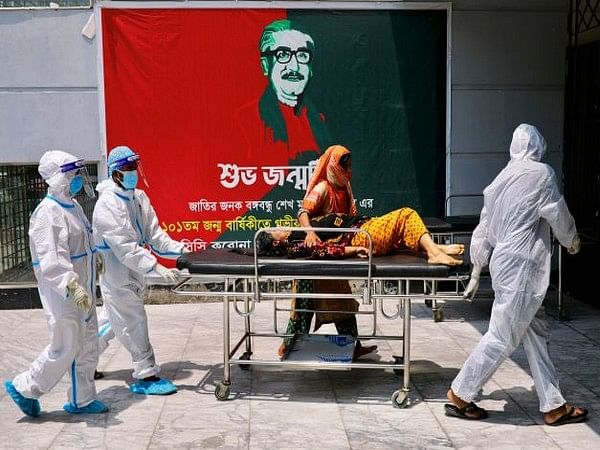Dhaka [Bangladesh], January 19 (ANI): Bangladesh, a nation born out of Pakistan in 1971 is performing better in universal health coverage indicators than its predecessor, reported Bangladesh Live News (BLN).
Universal health coverage (UHC) is a global health priority and one of the major targets of the Sustainable Development Goals (SDGs).
In a recent article in the Dawn, Professor Zafar Mirza of Shifa Tameer-i-Millat University, Islamabad and WHO adviser on Universal health coverage made some shocking revelations regarding the healthcare status in Pakistan.
For instance on neonatal mortality rate (NMR), Pakistan ranks second highest in the world, i.e. out of every 1,000 live births, 40 newborns die within 28 days of life.
Compare this statistic with Bangladesh, where under-5 years child mortality rate has declined gradually over the last 2 decades. Currently, it stands at 30 deaths per 1,000 live births, and it may be noted that these deaths accounted for 67 per cent of all under-5 years child deaths, reported BLN.
In Pakistan, almost 42 per cent of women aged 15-49 years, i.e. women of reproductive age, had moderate iron deficiency i.e. anaemia which is a major reason for underweight children born to these mothers and also a risk factor for maternal mortality due to post-partum haemorrhage.
Meanwhile, in Bangladesh, a government-led Maternal Health Voucher scheme since 2007 is targeting poor women with the aim to improve access to and the utilisation of maternal health services by reducing the financial barriers through the provision of incentives, reported BLN.
The scheme provides eligible women with a voucher that entitles them to a package of three antenatal check-ups, and safe delivery care in a health facility or at home with a skilled birth attendant.
The reduction in maternal mortality is attributed to multiple factors, including improved access and utilisation of health facilities, improvements in female education and per capita income.
In Bangladesh, children aged 6-59 months receive vitamin A capsules once every six months during National Immunization Days (NIDs) and vitamin A campaigns twice a year.
While, Pakistan is one of the two remaining countries in the world where Poliomyelitis (polio) is prevalent despite billions of dollars that have been spent on eradication efforts. Bangladesh was declared a polio-free country by the Regional Certification Committee of WHO almost a decade back in 2014, reported BLN.
On other healthcare counts, Bangladesh is way ahead. As Prof Mirza points out, with an estimated 10 million people living with hepatitis C, Pakistan is now home to the world’s largest population of patients infected by the virus, surpassing even China, despite the fact that medicines to treat it are available cheaply with a cure rate of 97-98 per cent.
Further, Bangladesh’s BEXIMCO Pharma has launched the generic version of the wonder drug Sofosbuvir for treating hepatitis C under the brand name Sofovir C.
The drug costs USD 1,000 per tablet in the developed market, making it one of the most expensive medicines in the world. But a tablet will cost Tk 600 in Bangladesh, and the total cost of the therapy would be Tk 50,400 for a 12-week course compared to the whooping Tk 67 lakh in developed countries, reported BLN.
In 2019, Bangladesh, Bhutan, Nepal and Thailand have become the first countries in WHO’s South-East Asia Region to achieve Hepatitis B control, with the prevalence of the deadly disease dropping to less than one per cent among five-year-old children.
Remarkable progress over the last decade has put Bangladesh on track for MDG-4 for child survival and achieved a 40 per cent decline in maternal mortality.
Bangladesh’s health financing strategy (2012-2032) sets out the Government’s ambition to expand social protection for health and move towards UHC through the implementation of a Social Health Protection Scheme, its monitoring and evaluation and a results-based Financing program. (ANI)
This report is auto-generated from ANI news service. ThePrint holds no responsibility for its content.




